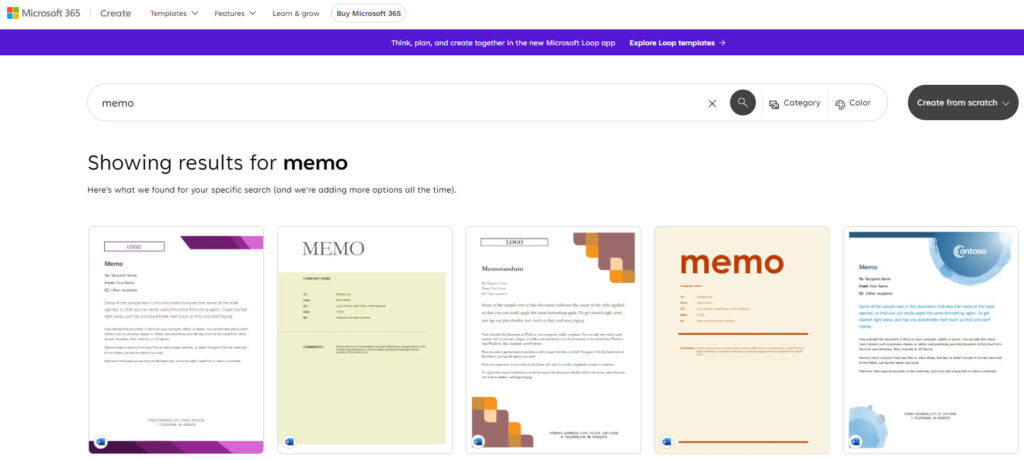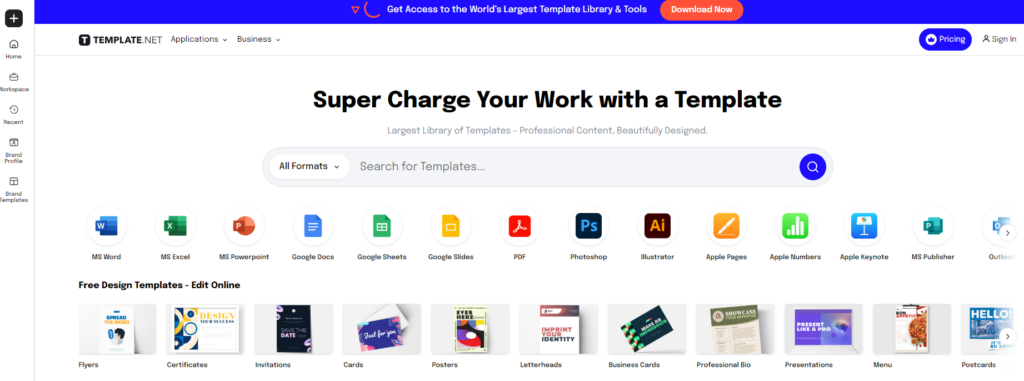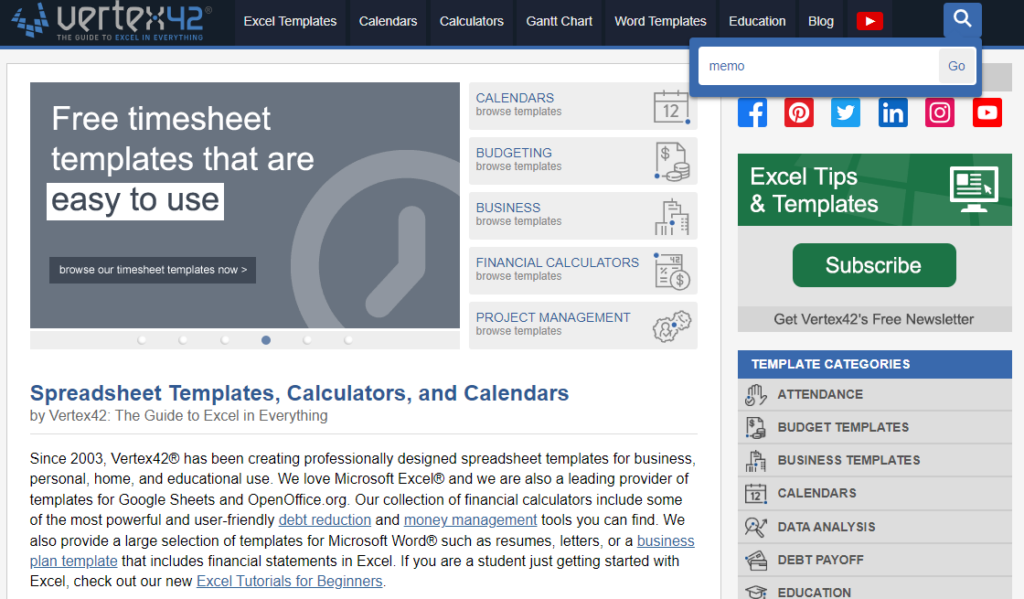In the fast-paced world of business communication, the memorandum, commonly known as a memo, stands as a crucial tool for conveying information within an organization. This concise document serves as a formal means of communication, facilitating clear and effective messaging among team members, departments, and executives.
In this guide, we will explore the ins and outs of memo writing, covering its definition, when to use it, essential components, steps to create an effective memo, common mistakes to avoid, tips for writing outstanding memos, examples, and resources, and tools for exploring and editing memos.
What is a Memo (Memorandum)?
A memorandum, or memo for short, is a written message used for internal communication within an organization. Memos are designed to convey information, announce decisions, or provide updates in a brief and to-the-point format. Unlike email sequences, memos are typically more formal and often used for official communication.
3 Types of Memos
The importance of a memo type depends on the context and the specific communication needs of an organization. However, three types of memos are often considered particularly important in various business settings:
1. Informational Memo
- Importance: Informational memos are crucial for keeping employees informed about important updates, changes, or announcements within the organization. They help maintain transparency and ensure that everyone is on the same page.
- Example: Announcing company-wide upcoming events, sharing updates on a project, or communicating changes in policies and procedures.
2. Policy Memo
- Importance: Policy memos play a vital role in communicating the rules, guidelines, and expectations within an organization. They help establish a framework for behavior, ensuring consistency and compliance across the workforce.
- Example: Introducing a new workplace safety policy, outlining guidelines for employee conduct, or communicating changes to the company’s leave policy.
3. Directive Memo
- Importance: Directive memos are essential for providing clear instructions and guidance to employees. They help ensure that tasks are carried out effectively, promoting efficiency and consistency in the execution of activities.
- Example: Instructing employees on the use of a new software system, providing guidelines for a specific project, or directing staff on emergency procedures.
6 Essential Components of a Well-Structured Memo:
1. Header
- Date: Mention the date the memo is written.
- To: Include the names and titles of the recipients.
- From: Include the sender’s name, title, and organization.
2. Subject Line
- Clearly state the purpose or subject of the memo concisely.
3. Opening
- Provide a brief introduction that outlines the purpose and context of the memo.
4. Body
- Present the main information in a clear and organized manner.
- Use headings, bullet points, or numbered lists for better readability.
- Provide necessary details, supporting information, and any relevant data.
5. Conclusion
- Summarize key points discussed in the memo.
- Include a call to action or next steps if applicable.
6. Closing
- End the memo with a courteous closing, such as “Sincerely” or “Best Regards.”
- Include the sender’s signature, especially for printed or physical memos.
6 Steps to Write an Effective Memo:
Step 1: Start with a Clear Heading and Purpose Statement
- Heading:
- Include the date prominently at the top of the memo to provide context.
- Specify the recipient’s name and designation, followed by your name and position.
- Craft a concise subject line that accurately reflects the content of the memo.
- Purpose Statement:
- Begin the memo with a purpose statement that clearly outlines the main objective.
- Define the problem, issue, or topic that the memo addresses.
- Briefly mention the importance of the memo and what the reader can expect.
Step 2: Write a Concise Introduction
- Opening Sentence:
- Start with an engaging opening sentence to grab the reader’s attention.
- Consider mentioning any relevant background information to provide context.
- State the Purpose:
- Clearly state the purpose of the memo within the first few sentences.
- Avoid unnecessary details in the introduction; save them for the body of the memo.
Step 3: Organize the Body of the Memo
- Paragraph Structure:
- Organize the main content into clear and concise paragraphs, with each paragraph addressing a specific point.
- Use headings or subheadings to guide the reader through different sections.
- Supporting Details:
- Support each point with relevant facts, data, or examples.
- Be specific and provide enough detail to make your case, but avoid unnecessary information.
- Use Formatting Techniques:
- Employ bullet points or numbered lists to break down complex information.
- Use bold or italics to emphasize key points or important information.
Step 4: Summarize Key Points in the Conclusion
- Recap Main Points:
- Summarize the key points discussed in the body of the memo.
- Clearly state any actions that need to be taken or decisions that need to be made.
- Call to Action:
- If applicable, include a call to action or specify the next steps that should be taken.
- Make it clear what you expect the reader to do or decide after reading the memo.
Step 5: Close Professionally and Provide Contact Information
- Closing Statement:
- End the memo with a courteous closing statement expressing gratitude or openness for further discussion.
- Avoid introducing new information in the closing; keep it focused on the main message.
- Contact Information:
- Include your contact information (email, phone number) to encourage follow-up questions or discussions.
- Ensure that the reader knows how to reach you for additional information or clarification.
Step 6: Proofread
- Before finalizing the memo, carefully proofread it to catch any grammatical errors, typos, or unclear statements. A well-proofread memo contributes to a professional and polished final product.
5 Common Mistakes to Avoid in Memo Writing:
To better convey the content of the memo to your audiences, it is best to double-check after following the steps and writing the memo to avoid the following mistakes:
1. Unclear Purpose
- Failing to state the purpose of the memo clearly.
- Solution: Begin with a concise subject line and an introductory paragraph that clearly outlines the purpose and context of the memo.
2. Inappropriate Tone
- Using an overly formal or informal tone that is not suitable for the audience or the message.
- Solution: Tailor the tone to the level of formality required by the organizational culture and the nature of the communication.
3. Overuse of Technical Language
- Including too much technical or industry-specific language that may be confusing to the audience.
- Solution: Use language that is easily understandable to the intended recipients. Define or explain technical terms when necessary.
4. Lengthy Content
- Making the memo excessively long or including unnecessary details.
- Solution: Keep the memo concise and focused. Stick to the key points and provide additional information only if it is crucial to the understanding of the message.
5. Poor Formatting
- Neglecting proper memo formatting and structure.
- Solution: Follow the standard memo format, including a header with the date and recipients, a clear subject line, and a well-organized body with appropriate headings and subheadings.
3 Websites for Downloading Memo Templates:
For those who may still be unfamiliar with the art of crafting memos, the good news is that there are online resources readily available to simplify the process. These templates are designed to guide users through the structure and formatting of memos, making it easier for individuals who may not be well-versed in the nuances of business communication. The following are three websites recommended for downloading memo templates:
1. Microsoft Office Templates

Description: Microsoft Office offers a variety of memo templates for Word. Users can browse through different styles and formats, and easily download templates for free.
2. Template.net

Description: Template.net provides a collection of memo templates in various formats such as Word, PDF, and Google Docs. Users can customize and download templates for free.
3. Vertex42

Description: Vertex42 offers a range of memo templates in Word format. Users can find templates for different purposes and download them for free to use with Microsoft Word.
Explore and Edit Memos on PDF Reader
For an even better experience, KDAN PDF Reader makes exploring memo templates and effortlessly editing memos an easy process. Users can navigate an array of professionally designed memo templates within the application, offering a variety of styles suitable for different business contexts. Once a template is selected, KDAN PDF Reader’s intuitive interface allows users to easily customize the memo content. Users can edit text, insert or remove sections, and personalize the formatting to align with their specific needs.
KDAN PDF Reader’s robust editing features ensure that the final memo maintains a polished and professional appearance. With KDAN PDF Reader, the process of creating and customizing memos is not only efficient but also elevates the overall quality of communication within the business environment.
# G2 2024 Best Office Software Award ⭐️Download for Free! KDAN PDF Reader - Mac.Windows
Conclusion
Mastering the art of memo writing is a valuable skill in today’s business landscape. By understanding the purpose, components, and best practices for creating a well-written memo, professionals can enhance effective communication within their organizations.
Whether conveying company policy updates, project progress, or important announcements, a well-crafted memo can streamline information flow and contribute to the overall success of an organization. Utilize the provided tips, memo examples, and resources to elevate your memo-writing skills and ensure your messages are clear, concise, and impactful.

